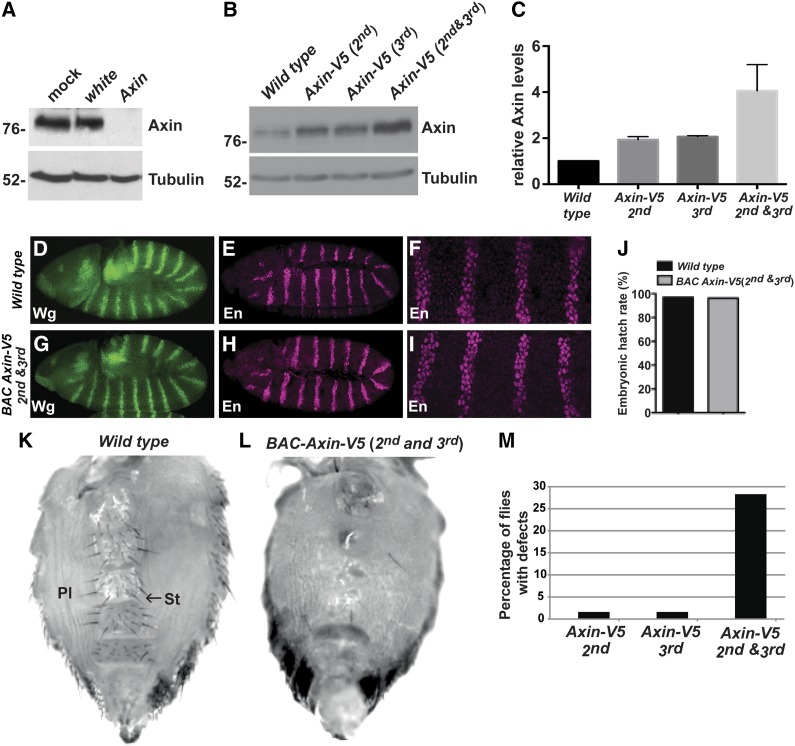Figure 1.
Threshold above which Axin disrupts Wingless signaling. (A) Lysates from S2R+ cells treated with mock, white (negative control), or Axin dsRNAs were subjected to immunoblot with Axin antibody. Axin antibody specifically detected endogenous Axin in lysates treated with mock or white dsRNA. Tubulin was used as a loading control. (B) Lysates from third instar larvae of the indicated genotypes were subjected to immunoblot with Axin antibody. (C) Quantification of Axin protein levels by immunoblot. Results represent three independent experiments. Values indicate mean ± SD. (D–I) stage 9 or 10 wild-type embryos (D–F), and embryos expressing BAC Axin-V5 on both the second and third chromosomes (G–I) stained with antibodies against Wingless (Wg) and Engrailed (En). Images in (F) and (I) are higher magnification views of embryos in (E) and (H), respectively. Wg and En expression patterns appeared indistinguishable in wild-type embryos and embryos expressing BAC Axin-V5. (J) The hatch rate of wild-type embryos and embryos expressing BAC Axin-V5. A total of 100 wild-type embryos and 80 BAC Axin-V5 embryos were analyzed. (K) Ventral abdomen of wild-type females exhibited normal organization of pleura (Pl), sternites, and sternal bristles (St, arrow). (L) Loss of sternal bristles and expansion of the pleura in flies expressing BAC Axin-V5 on both the second and third chromosomes. This phenotype was present with varying severity; shown is a representative example. (M) Percentage of flies exhibiting loss of sternal abdominal bristles.

